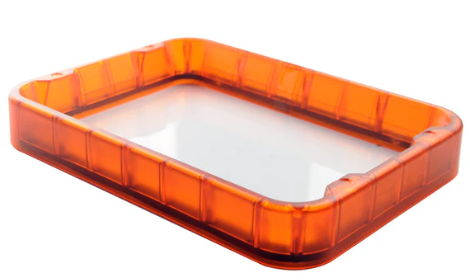Information
How To Maintain Your FEP and Know When To Replace It
Resin Printing can create detailed, high-resolution models using resin. The components for resin printing are simple: LCD screen to cure the resin (harden), a build plate which is lifted and lowered into a resin vat which holds the resin.
At the base of the resin vat is a thin film called FEP which plays a vital role in the printing process, ensuring each layer of resin adheres properly to the build plate and separates cleanly.
In this article we discuss how to maintain your FEP, signs it needs replacement and best practices to extend its life.
Understanding the Role of FEP
FEP (Fluorinated Ethylene Propylene) is a specially engineered plastic film designed for UV light transmission, flexibility, low stretch, hardness, and low surface adhesion. During the resin printing process, UV light passes through the FEP to cure the resin, forming each layer of your print.
The FEP’s flexibility and low surface adhesion help the cured resin layer detach cleanly during the lift cycle, preventing print failures and ensuring high-quality results. Knowing how to maintain this critical component is essential for consistent and successful printing.
Daily Maintenance Practices
Maintaining your FEP involves regular cleaning and inspection. After every print you should check the FEP for debris using a soft silicone squeegee or use the tank clean function and gently remove the cured layer at the bottom of the FEP.
If there was a failed print you should always filter the resin to be safe. This way you can avoid getting the FEP scratched or punctured and increasing the life expectancy for the film.
Best Practices for Prolonging FEP Life
To extend the life of your FEP, consider these best practices:
- Vary Print Positions: Avoid printing in the same spot every time. Some slicers can randomize the model position to help distribute wear evenly across the FEP.
- Position Prints Wisely: Place prints towards the edges and sides of the vat to facilitate a peel action rather than a pull, which reduces stress on the FEP.
- Gentle Handling: When removing prints or cleaning the vat, handle the FEP gently. Avoid using sharp or hard tools that could damage the film.
Knowing When to Replace Your FEP
On average the FEP has a lifespan of about 300 print hours depending on use and handling. Over the time the FEP will stretch and lose its abillity to maintain proper tension, which is crucial for the separation process during printing.
Even with meticulous care – the FEP is still a consumable item that will eventually need replacement. Signs that your FEP needs to be replaced include visible scratches, cloudiness or noticeable loss of tension. Keeping a few spare FEP sheets on hand can prevent downtime and ensure you’re always ready for your next print.
Conclusion
Maintaining your FEP is essential for achieving the best results in resin printing. By following proper cleaning practices, inspecting your FEP regularly, and knowing when to replace it, you can ensure your prints are consistently high-quality.


Pingback: New to 3D Printing? Here’s What You Need to Know – Stranden Fabrications